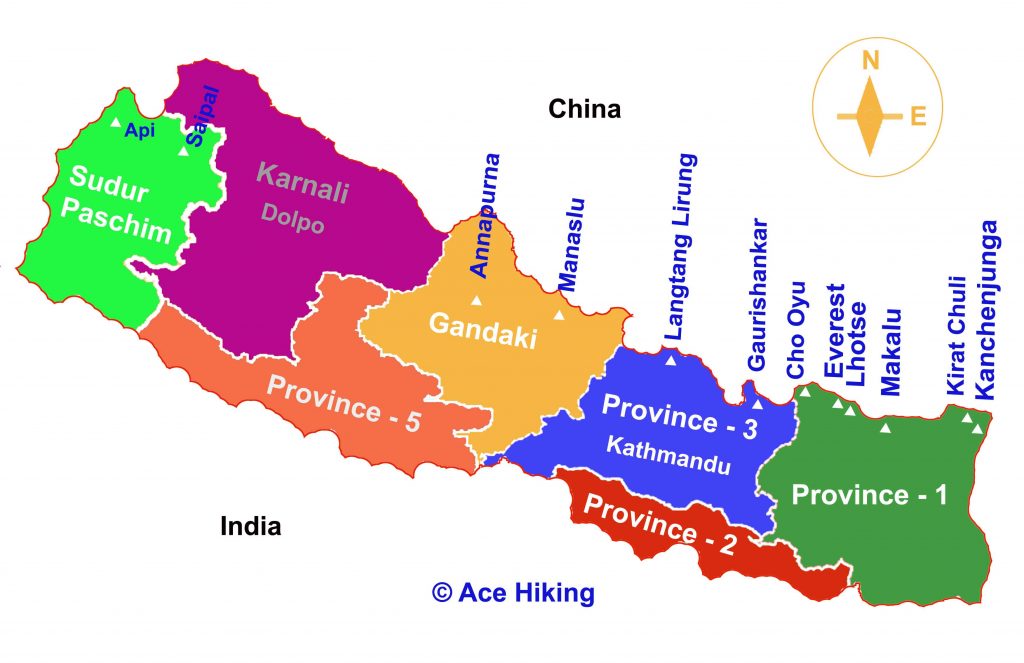Nepal is the country of the Mount Everest, the highest mountain in the world, and the birthplace of Gautama Buddha
Location:
Between India and China.
Area: 1, 47, 181 sq. km, stretching 800 km from east to west and from 90 to 230 km north to south.
Population: Approx. 28 million with absent population of 1.9 million and growth rate of 1.35% per annum
Latitude & Longitude: 26’12’ and 30’27’ North & 80′ 4′ and 88′ 12′ East
Capital city: Kathmandu — Entire population of Kathmandu about 30, 00,000.
Peoples: There are 92 ethnics, Language(s): There are 123 languages spoken
National Bird & National Flower:
Impean Pheasant (Danfe) & Rhododendron Arboreum (Lali Gurans)
National Festivals:
Dashain, Tihar, Shivaratri, Holi, Lohsar, Sakela, Chhath, Teej, etc.
World Heriatge Sites:
In Nepal, there are 10 UNESCO world heritage sites Kathmandu Durbar Square, Patan Durbar Square, Bhaktapur Durbar Square, Swayambhunath, Boudhanath, Pashupatinath, Changunarayan, Lumbini, Sagarmatha National Park (Mt. Everest National Park) and Chitwan National Park.
Currency: Nepalese Rupee (NPR), Check today’s exchange rate here.
Political-System: Federal Democratic Republic.
A. More than 5160 native flowering plants,
B. 1666 types of Fungi, 687 Algae, 740 mosses and 450 Firns,
C. 1440 species of spiders,
D. 5052 species of insect,
E. 185 species of fish,
F. 43 species of amphibians,
G. 100 types of reptiles,
H. 32 species of rhododendrons.

01. World’s highest peak – Mt. Everest,
02. World’s deepest George – Andha Galchhi,
03. Bird only in Nepal – Spin Baller,
04. World’s deepest valley – Arun valley,
05. World’s highest waterfall – Shoolighads,
06. World’s largest Himalayan range – Himalaya,
07. World’s highest pass – Lughla,
08. Mushroom only in Nepal- Tryafina Nepalenside,
09. Butterfly only in Nepal – Polymat Nepalensis,
10. Flower in highest palce – Stellari Decumbes ,
11. River from highest area – Arun River,
12. World’s biggest rhododendron – Rhododendron Arborium,
13. Airport in highest place – Solukhumbu, Syangboche,
14. Lake in highest place – Tilicho Lake,
15. National park in highest place- Sagarmatha National Park,
16. Hotel in highest place – Hotel Everest View (Syangboche)